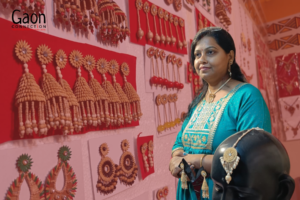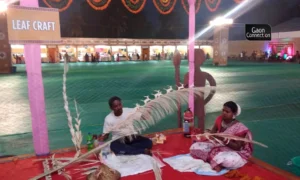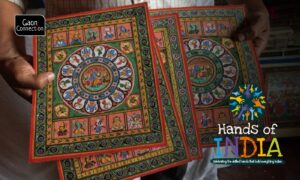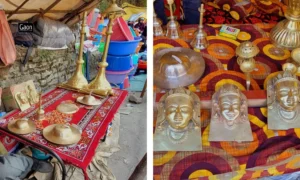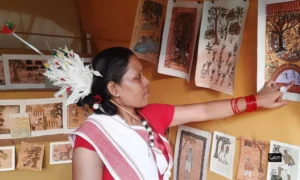Jhansi, Uttar Pradesh
It is happy chaos at Nripendra’s home. There is singing, loud chatter and the unmistakable aroma as bawarchis prepare laddoos. Children in bright clothes run around laughing and playing. Clearly, it is a home where a wedding is being celebrated.
There is vibrant art on the walls of bridegroom Nripendra’s home. Chiteri art is part and parcel of wedding rituals in the homes of the people of the Bundelkhand region in Uttar Pradesh.
“This indicates that a wedding is underway. If the name of a man is written first on the wall, it means it is the groom’s home. If the girl’s name appears first, then it is her home,” Kiran Srivastava, an aunt of Nripendra, told Gaon Connection.
Watch video:
Chiteri art was also used by matchmakers and the respective families to announce to the world at large that the eligible groom or bride of the home was already spoken for and were not available anymore for marriage.
Mohit Kushwaha is a Chiteri artist. “It takes an hour or so to paint one wall with Chiteri figures. Our input cost is about a hundred rupees while we earn something between three fifty to five hundred per household,” he told Gaon Connection.
The folk artist who adds Chiteri to his signature on the wall has been practising the artform for the past 12 years. He manages to earn upto Rs 25,000 in the wedding season that lasts for about two months.

The process to make the art form is opposite to the customary ways. In Chiteri, colours are fixed first. After that, black outlines are drawn to highlight figures.
What makes Chiteri unique
Chiteri is a part of Bundeli kalam shaili, which is a classical art form, but it is also folk art. Artists claim that it has been around since the 16th century, and the artwork can be found on the walls of the temples in Jhansi (Uttar Pradesh) and Orcha (Madhya Pradesh).
“Chiteri is unique because figures are painted first and only then are their outlines made in black, to highlight them,” explained Shweta Pandey, assistant professor at Lalit Kala Sansthan of Bundelkhand University.
However, methods to make this folk art have changed over the years. “Earlier, people would use colour from khaneej (mineral) and vanaspati (forest produce), now they use bright fluorescent colours,” the Jhansi-based professor told Gaon Connection.
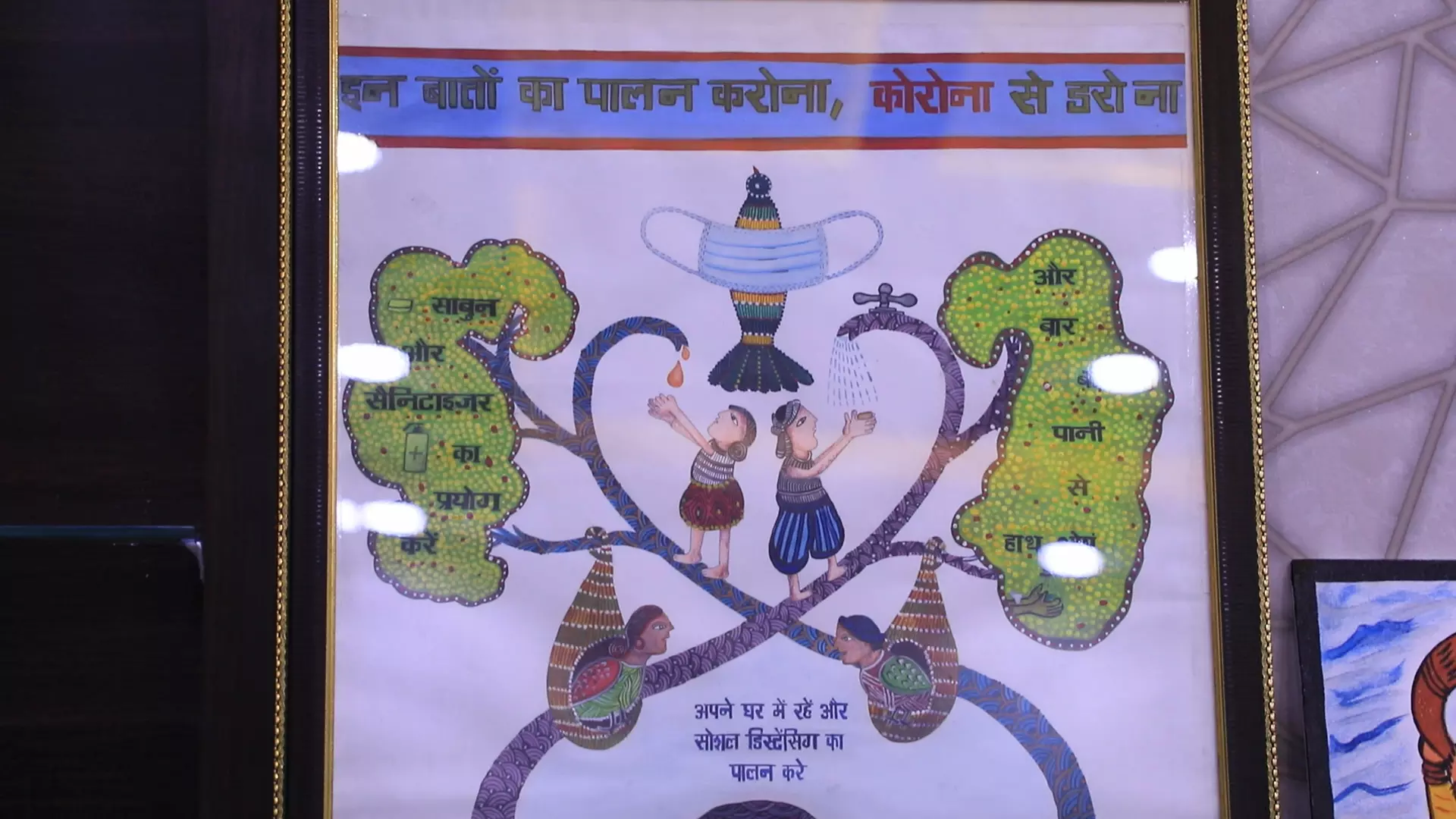
The art form has also been used to raise awareness on COVID19 disease.
Besides the rituals of a wedding ceremony or other auspicious occasions that are depicted by Chiteri, the art form in recent times has also been used to raise awareness on handwashing, wearing masks to prevent the COVID19 disease, etc.
Pandey however rued that Chiteri had somehow not got the same mileage as other traditional art forms in the country. “Chiteri art is as unique as Madhubani or Warli art. But, it is less known. One does not find Chiteri art hanging in people’s offices and homes,” Pandey said. Perhaps it was because a lot of young people were practising and promoting Warli and Madhubani art on social media and somehow that had not happened with Chiteri.
This was a rising concern, acknowledged Vikas Vaibhav, a traditional Bundeli artist in Jhansi. “If there are no takers for Chiteri art, then everything is in vain,” he told Gaon Connection.
“Besides, there is a particular season of wedding, what will the artists do to sustain their livelihood for the rest of the year,” he asked.
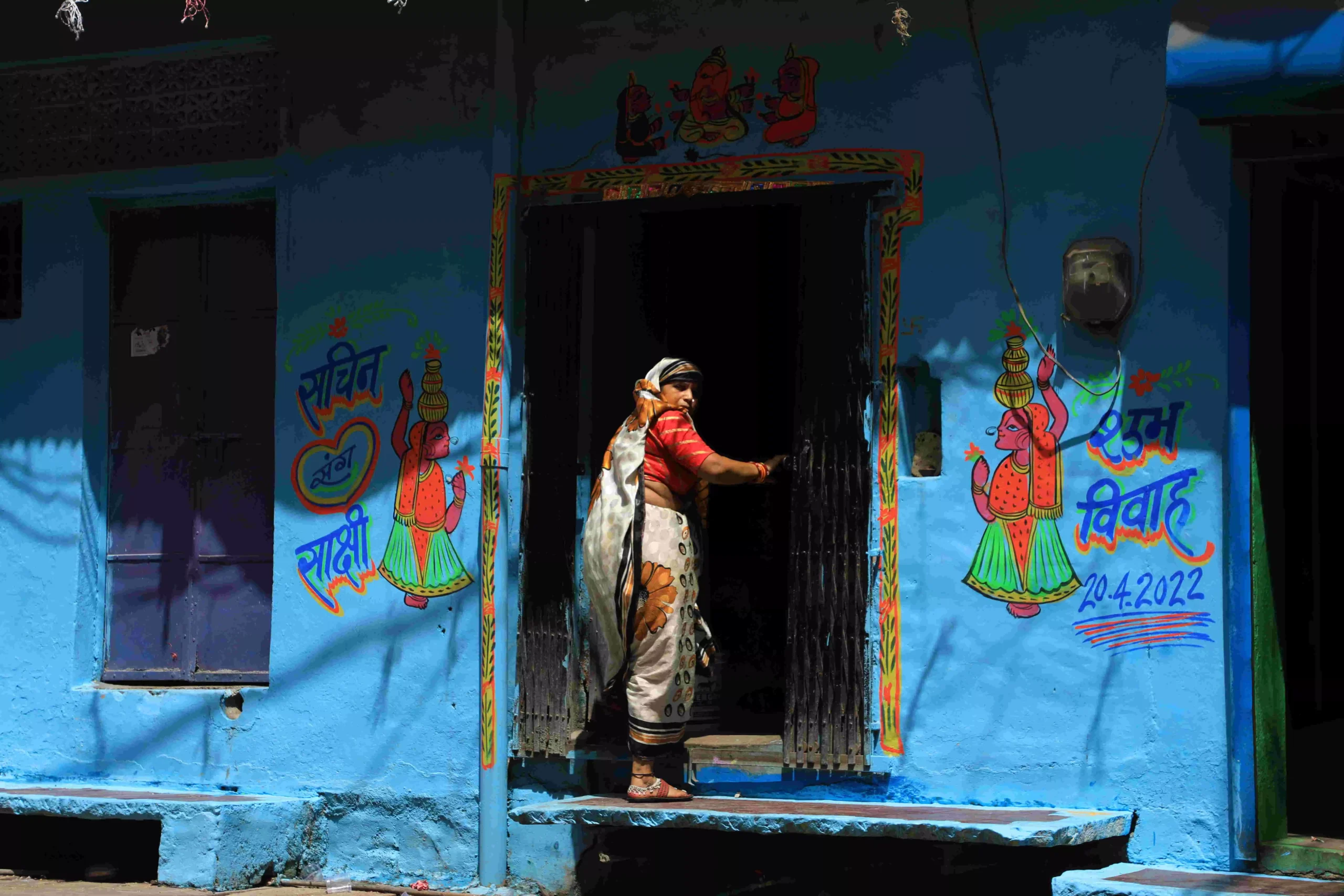
If the name of a man is written first on the wall, it means it is the groom’s home. If the girl’s name appears first, then it is her home.
Reviving the dying artform
But there have been sporadic efforts to revive the dying folk art and boost livelihood opportunities for artists in the division, by the Jhansi district administration.
“Bundelkhand, Jhansi division in particular, is rich in art and culture. But due to negligence, the traditional artform is going into oblivion. We are trying to conserve these artforms. We have established eight wings to promote literature, dance, art, music, and paintings of Jhansi,” Ajay Shankar Pandey, commissioner of Jhansi division told Gaon Connection.
The commissioner said that only five families, including that of Mohit Kushwaha, were practising this folk art as of now. Rest of the traditional artists have opted for other jobs.
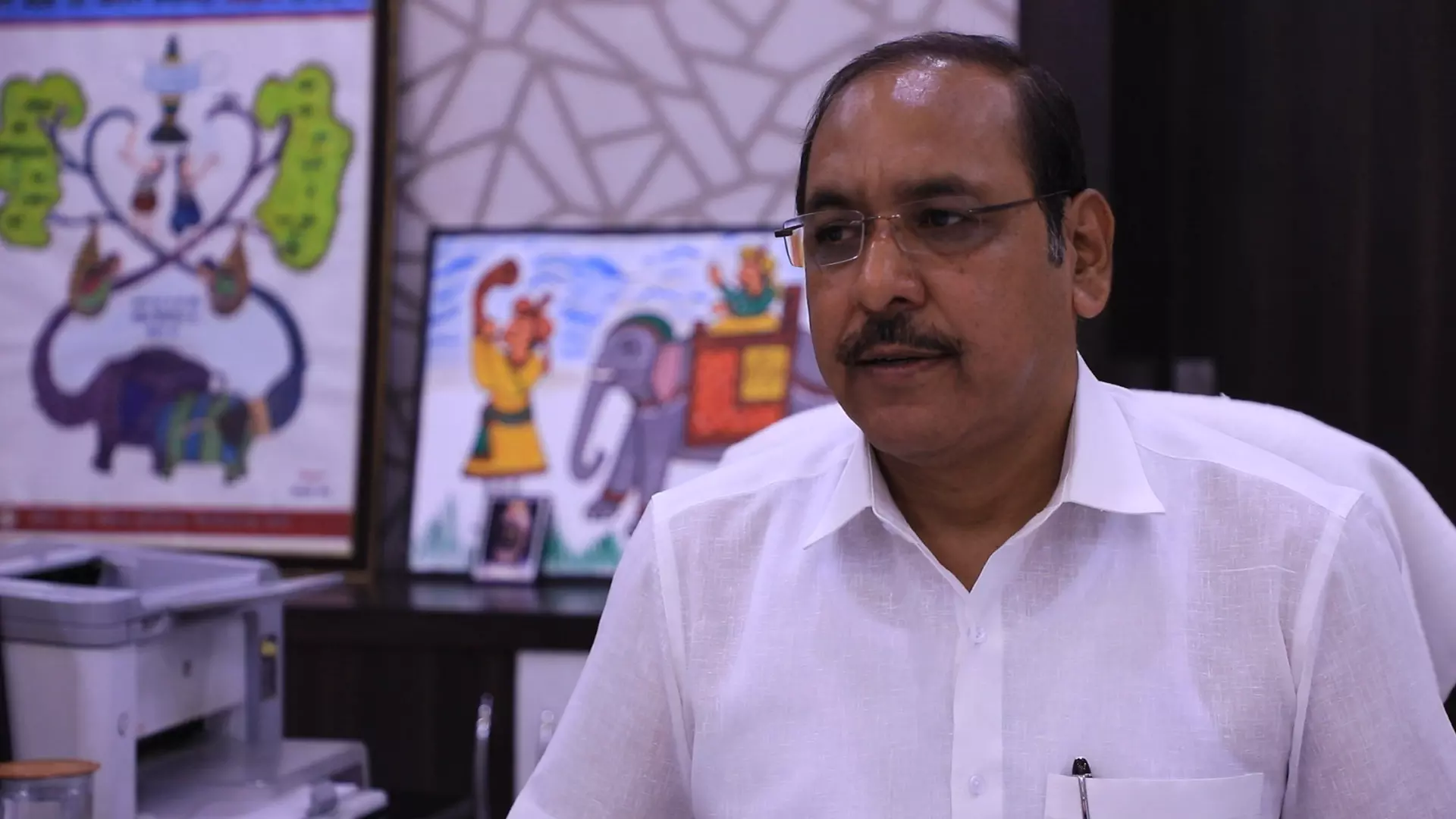
Ajay Shankar Pandey, commissioner of Jhansi division.
“We do not want this artform to decline. My grandfather used to practise this folk art. So did many of our neighbours. But they eventually were forced to quit and migrate to other cities in search of better livelihoods. We are the last few families to keep the art alive,” said Kushwaha.
In a bid to revive the artform an area has been earmarked where artists can paint and train youngsters in the art, said Commissioner Pandey.
“Artists are given colours, brushes, etc, all free of cost. We have set up a market as well, and requested all merchants in the division to display at least one Chiteri painting in their shops,” he added.
In another boost, Chiteri art will hold centre stage when Prime Minister Narendra Modi will visit Jalaun in mid-July to inaugurate the 296 km long Bundelkhand Expressway in Uttar Pradesh. Chiteri art will decorate the venue.







